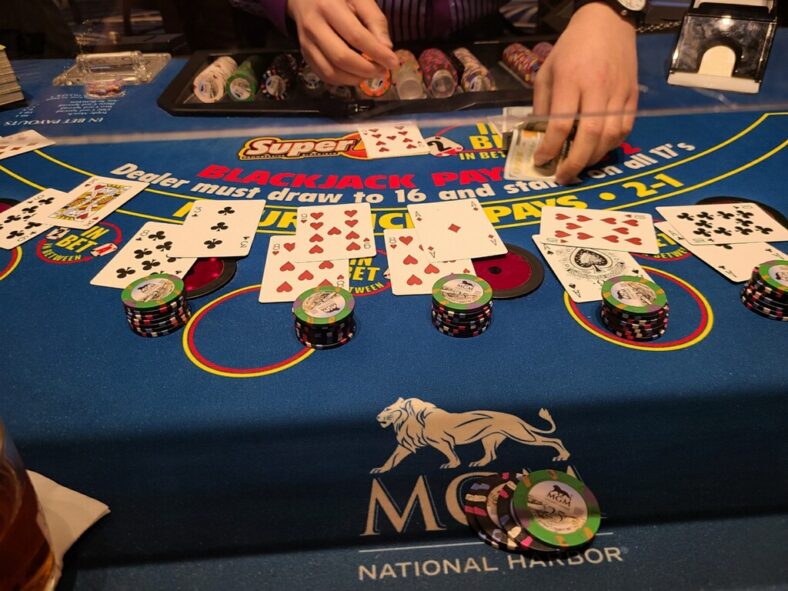Exploring the Advantages of Playing Color Prediction on Indian Casinos – In recent years, color prediction games have gained immense popularity among Indian casino enthusiasts, offering an exciting and potentially lucrative opportunity to predict the outcome of color sequences and win real money rewards. With the proliferation of online casinos catering to Indian players, the options for playing color prediction games have never been more accessible or diverse. In this article, we’ll delve into the advantages of playing color prediction on Indian casinos, exploring the thrilling gameplay experience, potential rewards, and other benefits that await players.
1. Accessibility and Convenience
One of the primary advantages of playing color prediction on Indian casinos is the convenience and accessibility it offers. With the rise of online casinos, players can enjoy their favorite color prediction games from the comfort of their own homes or on the go, using their desktop, laptop, smartphone, or tablet. This accessibility eliminates the need to travel to a physical casino, saving time and expenses while allowing players to enjoy their favorite games whenever and wherever they choose.
2. Wide Range of Color Prediction Games
Indian casinos offer a diverse array of color prediction games to suit every taste and preference. Whether you prefer traditional color prediction games like “Red or Black” or innovative variations with unique themes and gameplay mechanics, you’ll find plenty of options to explore. From classic color sequences to more complex prediction patterns, Indian casinos provide a wide range of games to cater to players of all skill levels and interests.
3. Exciting Gameplay Experience
Color prediction games offer a fast-paced and exhilarating gameplay experience that appeals to players seeking thrills and excitement. The anticipation of predicting the correct color sequence and the adrenaline rush of watching the outcome unfold add an extra layer of excitement to the gaming experience. With each prediction, players are immersed in a suspenseful and immersive journey that keeps them engaged and entertained for hours on end.
4. Potential for Lucrative Rewards
One of the most enticing aspects of playing color prediction on Indian casinos is the potential for lucrative rewards. With each successful prediction, players have the chance to win real money prizes, adding an element of thrill and excitement to every gameplay session. The ability to wager varying amounts of money and potentially multiply your winnings makes color prediction games a popular choice among players looking to test their luck and win big.
5. User-Friendly Interface and Features
Indian casinos prioritize user experience, offering intuitive interfaces and user-friendly features to enhance the gaming experience. Whether you’re a seasoned player or new to color prediction games, you’ll find that Indian casinos provide easy-to-navigate platforms with clear instructions, helpful tutorials, and interactive elements to guide you through the gameplay process. With just a few clicks or taps, you can place your predictions, track your progress, and cash out your winnings with ease.
6. Secure and Reliable Gaming Environment
Indian casinos prioritize the safety and security of their players, providing a secure and reliable gaming environment for all users. With state-of-the-art encryption technology, secure payment gateways, and stringent privacy policies, players can enjoy peace of mind knowing that their personal and financial information is protected at all times. Additionally, Indian casinos adhere to strict regulatory standards and undergo regular audits to ensure fair and transparent gameplay for all players.
7. Generous Bonuses and Promotions
To attract new players and reward loyal customers, Indian casinos offer a variety of bonuses and promotions that add value to the gaming experience. From welcome bonuses and deposit matches to free spins and loyalty rewards, players can take advantage of a wide range of incentives to enhance their gameplay and maximize their winnings. By capitalizing on these bonuses and promotions, players can extend their gameplay sessions, increase their chances of winning, and enjoy added benefits along the way.
Conclusion
Playing color prediction on Indian casinos offers a thrilling and rewarding gaming experience for players of all backgrounds and skill levels. With its accessibility, wide range of games, exciting gameplay experience, potential for lucrative rewards, user-friendly interface, secure gaming environment, and generous bonuses and promotions, color prediction games provide endless entertainment and excitement for players seeking thrills and rewards. Whether you’re a seasoned player or new to the world of color prediction, Indian casinos offer an immersive and enjoyable gaming experience that’s sure to keep you coming back for more.










